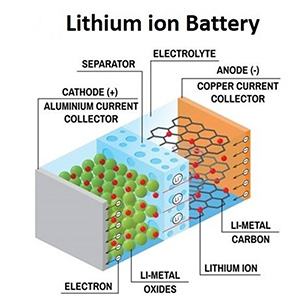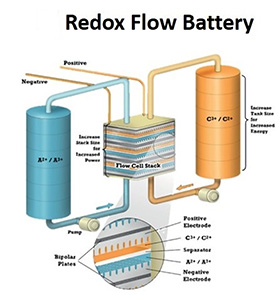Technology
Why XRB?

Despite many advantages such as high energy density, there are difficulties in using lithium-based batteries for long-duration ESS due to risk of ignition and explosion, reduced charge capacity (2-3% annual loss rate), short life cycle of 2,000 to 3,000, and issues with rare earth raw material supply and demand.
Therefore, the need to develop non-lithium rechargeable batteries equipped with eco-friendliness, safety, long lifespan, and low cost is gradually increasing, and the global demand for high-capacity, long-duration ESS rechargeable batteries is expected to surge due to the expansion of global renewable energy and the trend of high energy efficiency
Vanadium Redox Flow Battery (VRFB) is a product that can be commercialized in the large-capacity, long-duration ESS market. The vanadium active material(electrolyte) generates chemical oxidation/reduction (Redox) reactions in the stack to charge and discharge electrical energy.
The stack is responsible for output and the electrolyte tank is responsible for energy storage. Overseas companies have completed verification and technical verification for the last 20 years, but there is a problem in configuring an external electrolyte tank and a pump and piping to circulate the electrolyte to the stack.
However, compared to lithium batteries, the stack manufacturing cost is high, and there are limitations in high-output operation due to increased pressure inside the stack and increased external pump power, and commercialization is delayed due to difficult output control through electrolyte flow control.


The development of an electrolyte retention type Static Vanadium Redox Battery (SVRB) that can realize the rated energy capacity and output characteristics of a short-duration pump-free type while maintaining the characteristics of the existing flow battery such as long life and safety, is required for replacement of Lithium ion Battery.
The biggest advantage of SVRB is that it is a rechargeable battery that does not require an auxiliary facility (BOP) consisting of an electrolyte circulation pump and storage tank, etc. Therefore, it is expected that the commercialization of SVRB of the XRB structure, which hascharacteristics such as long lifespan and safety, will be promising in the full-scale large-capacity electricity storage system market in the future.

Existing long-duration Flow batteries should be able to compete with Lithium-ion batteries in economic feasibility by significantly lowering the high stack manufacturing cost.
In addition, it is necessary to develop a new stack type with high efficiency characteristics that can lower the pressure in the stack and produce high energy density.
It is necessary to develop competitive technologies that can achieve high output vs. cost and reduce stack costs, pump energy costs, electrolyte leakage, and O&M costs.


